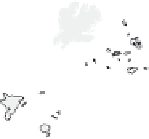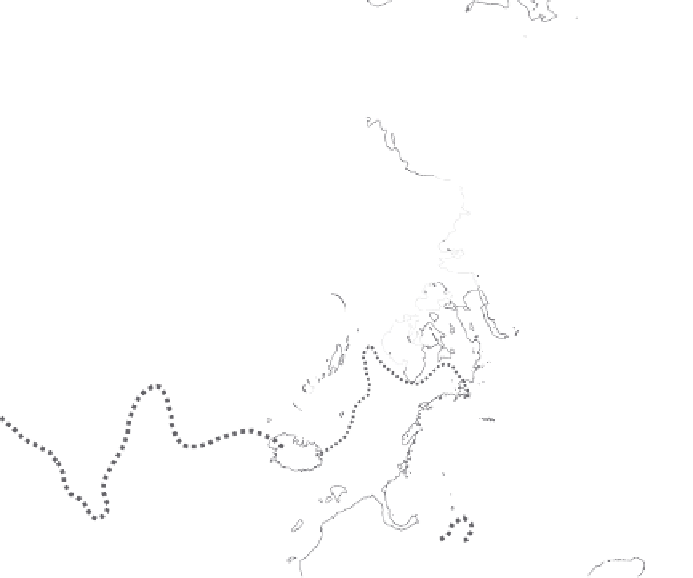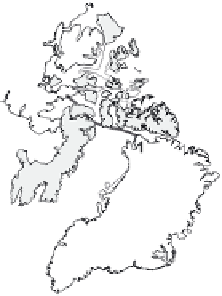Geoscience Reference
In-Depth Information
Figure 10.
Map showing the location of sites (see Table 1) where Holocene dinocyst records permitted reconstruction of
sea ice cover and evaluation of the difference between early Holocene (around 8000 years B.P.) and the late Holocene
(the last millennium). The sites indicated in bold are those used to illustrate sea ice changes over the last 10,000 years.
The thick line corresponds to the median of September sea ice extent (which is close to the limit of multiyear perennial
sea ice cover) for 1979-2000 A.D. (limits from the National Snow and Ice Data Center (NSIDC) Web page http://nsidc.
org/sotc/sea_ice.html). The dashed line corresponds approximately to the maximum extent of sea ice in winter.
with a dominant positive North Atlantic Oscillation (NAO)
[see also
Darby
et al.
, 2001;
Darby and Bischof
, 2004]. A
NAO+ pattern could also explain a stronger penetration of
the North Atlantic Current into the Arctic Ocean [
Duplessy
et al.
, 2001;
Sarnthein
et al.
, 2002;
Hald
et al.
, 2004]. Such
a scenario for the early Holocene very much resembles a
situation with a prevailing positive phase of the multidecadal
oscillation observed in records spanning the last 100 years
[e.g.,
Polyakov
et al.
, 2004], whereas the intensified export
of sea ice through Fram Strait would allow comparison with
the Arctic dipole anomaly [cf.
Wu
et al.
, 2006;
Watanabe
et
al.
, 2006].
spheric circulation and wind strength. Sea ice is thus a pa-
rameter that is difficult to quantify on a multiyear basis and
which already experiences very large changes in response to
the current anthropogenic warming. As a consequence, the
development of approaches for reconstructing past sea ice
cover is never a straightforward matter, especially since the
establishment of transfer functions requires some calibration
with “modern” values. One difficulty lies in the fact that the
modern observations, which we need to use as reference, are
not uniform [e.g.,
Walsh and
Chapman
, 2001;
Yi
et al.
, 1999]
and not necessarily representative of mean sea ice conditions
over longer timescales. This is particularly critical because
the time interval recorded within surface sediment samples
used for analyses frequently ranges up to hundreds of years
depending upon sedimentation rates and biological mixing
of sediment. Such uncertainties add to limitations inher-
ent to any transfer function using microfossils because of
taphonomical processes. The discrepancies between mod-
ern observations and reconstructions from surface sediment
samples illustrate the uncertainty in sea ice reconstruction
6. CONClUSION
Sea ice is a parameter in the climate system that is charac-
terized by a high variability at all timescales and which has
complex dynamics since it depends upon air temperature,
salinity, and depth of the upper water layer and stratification
and turbulence in the water column in addition to atmo-




















































































Search WWH ::

Custom Search